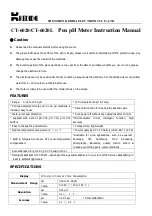
ENSONIQ Avista 7600 User’s Guide
23
Proper Operation of the Avista 7600
Temperature Guidelines
The Avista 7600 contains a substantial amount of computerized and
electronic circuitry that can be susceptible to damage when exposed to
extreme temperature changes. When the Avista 7600 is brought inside
after sitting in a cold climate (i.e., the back seat of your car),
condensation builds up on the internal circuitry in much the same way
a pair of glasses fogs up when you come inside on a cold day. If the unit
is powered up as this condensation occurs, components can short out or
be damaged. Excessively high temperatures also pose a threat to the
unit, stressing both the internal circuits as well as the case. With this in
mind, it is highly advisable to follow these precautions when storing
and setting up your Avista 7600:
•
Avoid leaving the Avista 7600 in temperatures of less than 50
degrees Fahrenheit or more than 100 degrees Fahrenheit.
•
When bringing the Avista 7600 indoors after travel, allow the unit
at least 20 minutes to reach room temperature before powering up.
In the case of excessive outdoor temperatures (below 50 degrees
Fahrenheit or above 100 degrees Fahrenheit), allow an hour or more
before power up.
•
Avoid leaving the Avista 7600 inside a vehicle exposed to direct
sunlight.
Care and Feeding of the Disk Drive
The Avista 7600’s disk drive is used to store sounds, rhythms, and
sequencer data. This disk drive will store your data on a high-density
(HD) 3.5" floppy disk.
HD floppies have two windows.
Floppy disks are a magnetic storage medium, and should be treated
with the same care you’d give important audio tapes. Just as you would
use high quality audio tapes for your important recording needs, we
recommend using high quality floppy disks for your Avista 7600. Here
are a few Do’s and Don’t’s concerning disks and the disk drive.
Содержание AVISTA 7600
Страница 1: ...User s Guide...
Страница 32: ...Avista 7600 User s Guide Part Number 9310023301 A Model Number MM 171...




































